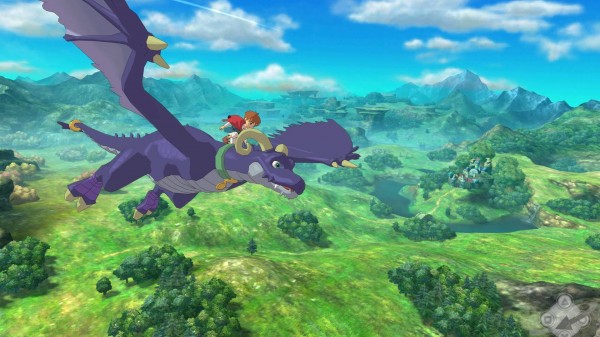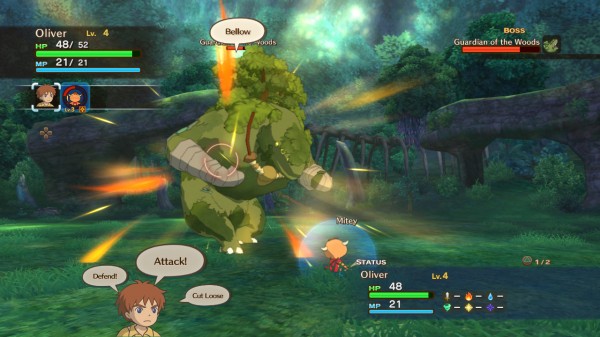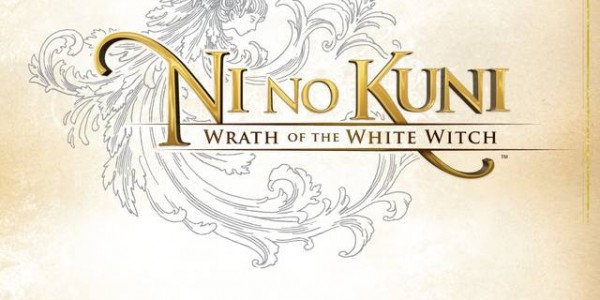A world of majestic landscapes and magical creatures falls prey to its own seedy underbelly – aka evil wizards – only to find hope with the appearance of the chosen one… or destined savior, or whatever other cliché term one prefers. It’s an all-too-familiar videogame narrative that speaks to the cynic in all of us, and yet Ni no Kuni: Wrath of the White Witch miraculously takes that foundation, injects ridiculous amounts of charm, and delivers one of the more refreshing JPRG experiences in recent years. Yes, it does include many of the genre’s trappings and the story’s emotional pull can feel heavy-handed at times, but what Ni no Kuni lacks in execution it makes up for in heart, quite literally (more on that later).
One of the reasons for Ni no Kuni‘s narrative success is the cast of characters, including protagonist Oliver. The 13-year-old boy of Motorville – a peaceful little suburban town – finds himself thrust into a seemingly impossible situation following the tragic death of his mother in the opening moments of the game. Oliver secludes himself in mourning, but when his favorite doll Drippy comes to life as a fairy and proposes a way to save his mother in the “other world,” a long journey begins. The childlike love for one’s mother fuels Oliver, and this admirable motive makes him a compelling character. If he happens to save the world along the way then great, but Oliver’s main priority is to bring his mother back to life. That goal can only be achieved with the help of Drippy, who amusingly refers to himself as Lord High Lord of the Fairies in a brilliant Welsh accent. He has no shortage of humorous and witty remarks for each situation, and by the end of Ni no Kuni I was wracking my brain to come up with more memorable videogame sidekicks.

Ni no Kuni‘s immediate appeal extends beyond the cast of characters. The entire world in the game exudes copious amounts of charm and whimsy with its animal kings, lighthearted humor, and fun localization quirks. I was already enjoying the game, but then I encountered enemies called Wayward Sons – at that point I was all in. One can’t help but feel swept up the spectacle of it all, which is largely reminiscent of the best Studio Ghibli films. The animated film company solely worked on Ni no Kuni‘s visuals, but it feels like developer Level-5 channeled the spirit of movies like “Porco Rosso” and “Howl’s Moving Castle” while crafting the game’s narrative.
Studio Ghibli’s involvement with Ni no Kuni plays a large role in framing its appeal. The company prides itself on inventive character design and awe-inspiring environments, two aspects that absolutely shine in this game. A huge grin would spread across my face with each new town I discovered thanks to the painstaking detail and vibrant colors. The fundamental art style alone makes Ni no Kuni a joy to look at. Factor in wonderful voice acting and an emotional score courtesy of Joe Hisaishi and you have a standout presentational package.
Unfortunately the presentation is not entirely consistent in the way it’s delivered. More specifically, the absence of voice acting during key moments creates a disconnect between the player and narrative. The overwhelming presence of text-only sections does not create a problem, but the jarring transitions definitely stand out. There would be moments in which I’d enjoy a fully voiced section, only for the game to back out and go back to text in mere seconds. This is characteristic of the whole experience and happens quite often. The strength of the writing helps combat the issue to a certain extent, but it’s still one of Ni no Kuni‘s biggest weaknesses.

The presentational concerns don’t factor into the game’s combat system, which provides fun and engaging encounters while taking cues from the Pokémon series. Battles are handled primarily by cute little creatures called familiars, many of which can be collected by the player over the game’s 40-plus-hour play time. Each familiar has its own set of unique skills, and their main attributes can be increased with various food items. On the battlefield itself, attacks are handled with a cooldown system while the player moves in real time, making defense a more active responsibility. Familiars can only remain on the battlefield for a short time, so the player must juggle through different creatures in order to win. That only becomes a real concern during boss battles, but those encounters sure are fun… and stressful. The random encounters start to wear thin, though, in large part because the game encourages grinding. Every time the player obtains a new familiar, they start at a much lower level and/or form, meaning it’s back to the battlefield to fight the same enemies over and over again. It’s 2013 and gamers don’t have a huge tolerance for that kind of stuff, so I can see that being a glaring concern for many. Worst of all is that it discourages experimentation. Once I had my three main familiars for each party member, I stuck with them for the entire game and ignored trying other combinations. It’s a shame, because part of the fun should be collecting the different familiars to use them in all sorts of ways.
Fetch quests also rear their ugly heads in Ni no Kuni, but the game handles these in an interesting way. All kinds of people in the other world have lost parts of their heart, but Oliver can cure them. By using the “take heart” spell, Oliver borrows certain qualities from superlative individuals, whether it be a vendor with incredible courage or a sea traveler brimming with ambition. These heart pieces are then taken to people lacking in something like courage or ambition, resulting in a welcome reward. It does still involve a lot of running around, but hearing short tales of bountiful love between sisters or a traveler’s bravery in the face of danger is – pardon the pun – heartwarming. The incentive plays an important role too, because each of these quests come with merit stamps. Those merit stamps can then be traded in for helpful skills such as increased movement speed or rarer item drops from enemies. But most of all, these quests yet again exemplify the charm and inescapable likeability that defines Ni no Kuni.
One of my favorite things about video games is how a player can lose him/herself in the world, and Ni no Kuni represents this perfectly. It has its problems, but at the end of the day what I remember most about the game is its magical world and everything in it, from the boisterous bovine queen of Al Mamoon to the wisecracking fairy who travels with Oliver for the entirety of the journey. Those memories make Ni no Kuni an engaging videogame experience, and it’s one that I hope many people will have.


















